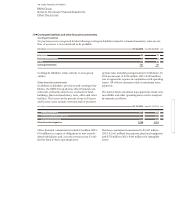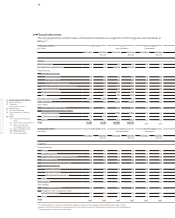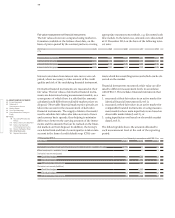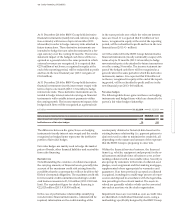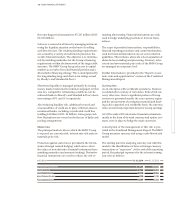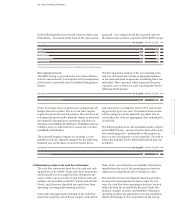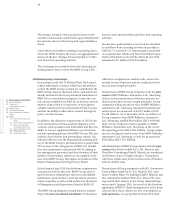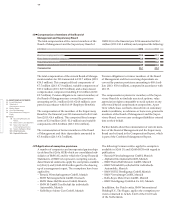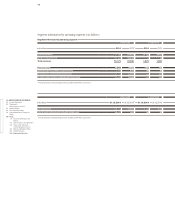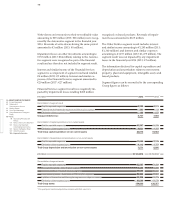BMW 2014 Annual Report Download - page 159
Download and view the complete annual report
Please find page 159 of the 2014 BMW annual report below. You can navigate through the pages in the report by either clicking on the pages listed below, or by using the keyword search tool below to find specific information within the annual report.
159 GROUP FINANCIAL STATEMENTS
the reporting period amounted to € 7,247 million (2013:
€ 6,760 million).
Solvency is assured at all times by managing and moni-
toring the liquidity situation on the basis of a rolling
cash flow forecast. The resulting funding requirements
are secured by a variety of instruments placed on the
world’s financial markets. The objective is to minimise
risk by matching maturities for the Group’s financing
requirements within the framework of the target debt
structure. The BMW Group has good access to capital
markets as a result of its solid financial position and a
diversified refinancing strategy. This is underpinned by
the longstanding long- and short-term ratings issued
by
Moody’s and Standard & Poor’s.
Short-term liquidity is managed primarily by issuing
money market instruments (commercial paper). In this
area too, competitive refinancing conditions can be
achieved thanks to Moody’s and Standard & Poor’s short
-
term ratings of P-1 and A-1 respectively.
Also reducing liquidity risk, additional secured and
unsecured lines of credit are in place with first-class in-
ternational banks, including a syndicated credit line
totalling € 6 billion (2013: € 6 billion). Intra-group cash
flow fluctuations are evened out by the use of daily cash
pooling arrangements.
Market risks
The principal market risks to which the BMW Group
is exposed are currency risk, interest rate risk and raw
materials price risk.
Protection against such risks is provided in the first
in-
stance through natural hedging which arises when
the values of non-derivative financial instruments have
matching maturities and amounts (netting). Derivative
financial instruments are used to reduce the risk
re-
maining after netting. Financial instruments are only
used to hedge underlying positions or forecast trans-
actions.
The scope of permitted transactions, responsibilities,
financial reporting procedures and control mechanisms
used for financial instruments are set out in internal
guidelines. This includes, above all, a clear separation of
duties
between trading and processing. Currency, inter-
est rate and raw materials price risks of the BMW Group
are managed at a corporate level.
Further information is provided in the “Report on out-
look, risks and opportunities” section of the Combined
Management Report.
Currency risks
As an enterprise with worldwide operations, business
is conducted in a variety of currencies, from which cur-
rency risks arise. Since a significant portion of Group
revenues is generated outside the euro currency region
and the procurement of production material and fund-
ing is also organised on a worldwide basis, the currency
risk is an extremely important factor for Group earnings.
At 31 December 2014 derivative financial instruments,
mostly in the form of forward currency and option con-
tracts, were in place to hedge the main currencies.
A description of the management of this risk is pro-
vided
in the Combined Management Report. The BMW
Group measures currency risk using a cash-flow-at-risk
model.
The starting point for analysing currency risk with this
model is the identification of forecast foreign currency
transactions or “exposures”. At the end of the reporting
period, the principal exposures for the relevant coming
year were as follows:
in € million 31. 12. 2014 31. 12. 2013
Euro / Chinese Renminbi 10,937 10,691
Euro / US Dollar 4,743 4,401
Euro / British Pound 4,818 3,852
Euro / Russian Rouble 758 1,738
Euro / Japanese Yen
1,004 1,469


